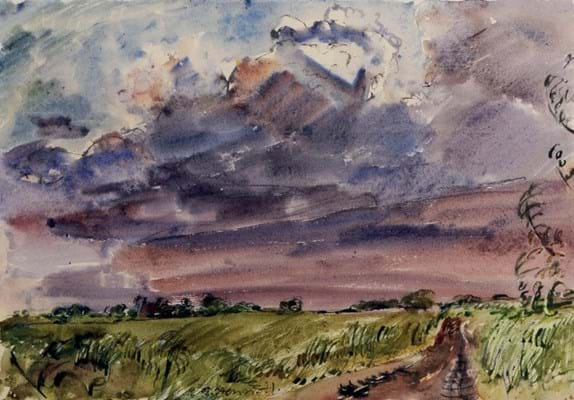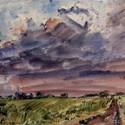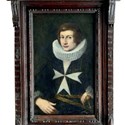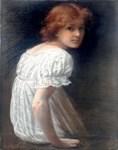The 10-lot group offered in Oxford was among just 77 works thought to have been sold at auction since 1986, according to the Art Sales Index. The fact that he died young – captured in 1945 by Indonesian nationalist fighters in Java and presumed dead shortly thereafter – partly accounts for the scarcity of his work.
Born in Kent, the second son of a clergyman, Hennell specialised in illustrations of British country crafts and craftsmen at work in and beyond the home counties.
His work was much admired by his friends Edward Bawden and Eric Ravilious, who regarded his expressive ‘alla prima’ watercolours of a vanishing agricultural society as ‘works of genius’.
Consigned by a private collector who had amassed them over a 20-year period, the vivid and dramatic watercolours at Mallams depicted scenes such as threshing, baling, and orchard clearing. They dated from the 1930s and early ‘40s. Estimated at around £500-800 each, they went on to total £8400 from several buyers.
Super Solomon
Five months after Mallams sold a Simeon Solomon (1840-1905) sketch, Mercury Rises, for £13,800, another drawing by the Pre-Raphaelite cropped up.
Vespertilia, a signed 19½ x 7in (50 x 17cm) white chalk and buff paper work from 1896, came fresh to market from a different private source. The depiction of a lady, shrouded in a veil and holding myrtle, relates to the poem of the same name by the Victorian poet and critic Rosamund Marriott Watson.
It had been published a year earlier in 1895. Described as in “untouched condition” by Mallams specialist Rupert Fogden, it bettered its £1500-2000 guide to sell to a private collector on thesaleroom.com at £8000.
Elsewhere, a Maltese school portrait of an unknown knight wearing a ruff within a period frame nearly tripled its £800-1200 guide, selling to an English private buyer at £3400.
The main appeal of this 2ft 6in x 21in (77 x 54cm) oil was the sitter’s tunic, emblazoned with the Jerusalem cross of the Knights of St John. At the time of this portrait, which dates to the 17th century, the cross of the Knights of St John was a symbol of resistance to Ottoman expansion and the defence of Europe.



















